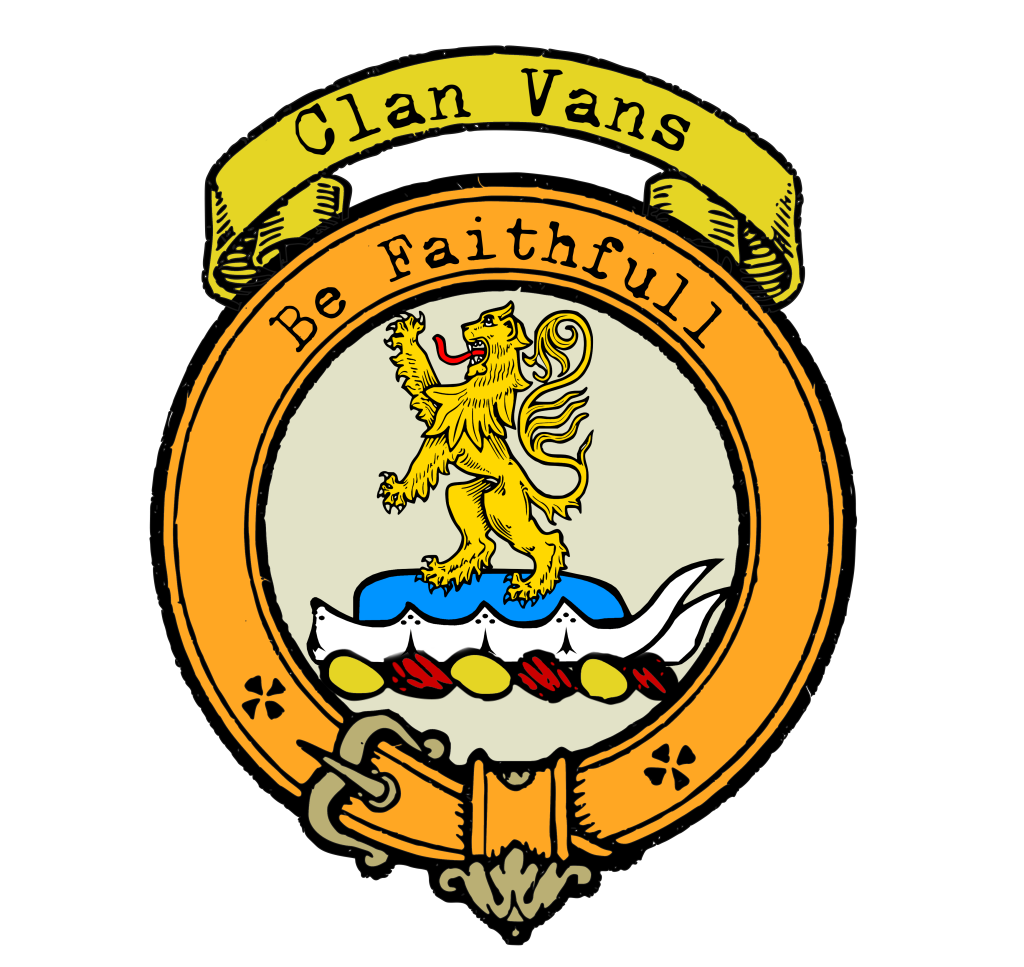Clan Vans
|
|
CREST: On a chapeau Azure furred Ermine a lion rampant Proper holding in his paws a balance Gules MOTTO: Be faithful TRANSLATION: N/A VARIATIONS: N/A |
| The name “Vans” or “Vaus” finds its roots in Norman France, where it derives from ‘vaux’ or ‘vaus,’ meaning ‘valleys’ or ‘dales.’ The family’s journey to Scotland is shrouded in the mists of time, but it’s believed they arrived in the eleventh century. Their arrival coincided with Queen Margaret’s entourage, who later became Saint Margaret, the wife of King Malcolm III.
One of the most significant landmarks associated with Clan Vans is Dirleton Castle, situated in East Lothian. The castle’s design reflects a strong Norman and French influence, a testament to the family’s historical connections. Unfortunately, during Edward I’s invasion of Scotland in 1297, Dirleton Castle endured a long and bitter siege, marking a turbulent chapter in Clan Vans’ history. Around 1384, a nephew of William de Vaus of Dirleton married the heiress to the lands of Barnbarroch in Wigtownshire. This marriage marked a transition in the family’s nomenclature, and they came to be known as ‘of Barnbarroch.’ This change in name signified their shift in focus and allegiance. In 1747, a significant event in Clan Vans’ history unfolded when Kpjm Vans of Barnbarroch married Margaret, the only child and heir of Robert Agnew of Shauchen. In return for a substantial inheritance, he assumed the additional surname of Agnew. This matrimonial merger not only changed the family name but also solidified their place in Scottish history. The Clan Vans has not only left its mark on the landscape but also on the annals of Scottish military history. John Vans Agnew served valiantly in the Second Boer War and later commanded the Scottish Horse Yeomanry during the First World War. Their military service is a testament to their dedication to their nation. In the nineteenth century, Barnbarroch House underwent significant redesign and extension. The architect and landscape gardener, John Loudon, played a pivotal role in these improvements. His treatise, “Forming, Improving, and Managing Country Houses,” showcased these enhancements, highlighting Clan Vans’ commitment to both preserving their heritage and adapting to changing times. |
|
Citations:
|
|

